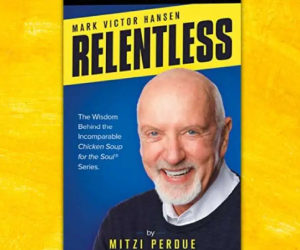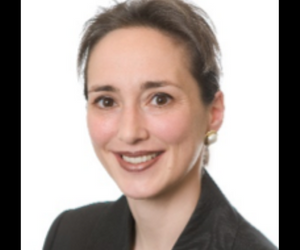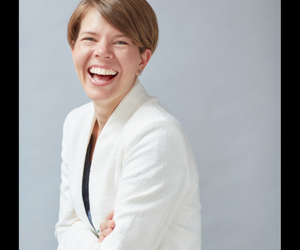Breast Cancer: Don’t Over diagnose, Do Improve Lifestyle
Avoid Overdiagnosis
When you screen a healthy population for breast cancer, you’re going to get over-diagnosis. This has become particularly evident. As screening practices switched from film-based mammography to digital mammography, we now can detect more small lesions. Only some of those small lesions that we are now detecting will grow into aggressive cancers. For 10-30% of the cases we find a lesion, we don’t necessarily need to cut it out or radiate it; we could follow it to see if it increases in size in a short period of time.
Overdiagnosis is particularly important for older women to consider. We don’t want the elderly woman to feel traumatized by being treated for an indolent lesion; especially when it will not prolong her life and increase her anxiety. Once she’s had lumpectomy and radiation for an indolent lesion, she’ll have follow-up tests for the rest of her life. Overdiagnosis means that she’s likely to endure all this for a condition that might have caused her very little trouble the rest of her life.
To Avoid Overdiagnosis, Only Do Risk-Based Screening
At the Breast Cancer Surveillance Consortium, we’ve developed the free BCSC Risk Calculator. It can be accessed from https://tools.bcsc-scc.org/bc5yearrisk/calculator.htm and downloaded . It’s also available for download to your iPhone from https://itunes.apple.com/us/app/bcsc-risk-calculator/id919034661?mt=8.
One of the goals of the Risk Calculator is to encourage health care providers to assess a woman’s risk before deciding to screen for breast cancer. We now know that it’s common for women to over- or underestimate breast cancer risk. With this tool, health care providers will have a much more accurate picture of a woman’s individual risk; they can then delay screening to a later age and/or screen those who are at low risk for breast cancer less often.
Instead of merely going by age, we can now also take into account other aspects of the patient. We can consider the individual’s ethnicity, breast density, and whether she’s had a first-degree relative with breast cancer. Another thing we could consider is whether she’s had a breast biopsy, and if so, the breast biopsy outcome. The Risk Calculator is free, simple, easy-to-use, and can decrease the risk of overdiagnosis by tailoring screening to a woman’s risk of breast cancer.
We Need a New Paradigm for Responding to Small Lesions
As it is, all small lesions are biopsied to determine if they are cancer. However, some lesions put women at risk for breast cancer, but are not themselves cancer. In the same sense that moderate hypertension is a risk factor for stroke, but hypertension is a condition, not a disease. Whether it’s a small lesion or moderate hypertension, the symptoms bear watching, but they’re symptoms, not the disease itself that requires aggressive treatment. Research is underway to monitor small lesions rather than removing all of them.
Lifestyle Modifications are Important for preventing Breast Cancer
The data are clear: if a woman is overweight or obese and reduces her weight, she’ll reduce her risk of breast cancer.
The data are also clear that exercise is important for risk reduction. She needs to be physically active for at least 20 or 30 minutes for 5 to 7 days per week. A brisk walk is good, taking the stairs, and vigorous housework such as gardening, vacuuming or sweeping will also help. Her goal should be movement as opposed to just sitting.
As for diet, there aren’t enough large-scale diet studies to allow us to say which diet is most protective against breast cancer. A Mediterranean Diet, one that’s high in fruits, vegetables, whole grains, legumes, and nuts, seems to hold some promise, but we aren’t in a position right now to be sure. What we do know is: if your patient is overweight, she needs to consume fewer calories, and whether she’s overweight or not, she needs to exercise 5 to 7 days a week.
Search Articles
Latest Articles
Putin Has Vast Vulnerabilities: The Free Russia Foundation Wants To Reveal Them To The West.
https://www.dailywire.com/news/putin-has-vast-vulnerabilities-the-free-russia-foundation-wants-to-reveal-them-to-the-west Publication – dailywire.com
Visiting Ukraine | Mitzi Perdue & Clare Lopez (TPC #1,472)
Visiting Ukraine | Mitzi Perdue & Clare Lopez (TPC #1,472)Watch The Episode About The Episode Clare Lopez and she served in the CIA for 20 years. Spotify: https://open.spotify.com/show/4bIuk6mPLtjggUUGi9CRPQ?si=Cvn4e_GITyuGEiKI3CiSug&dl_branch=1
Russia’s Ugly Prisoner Exchanges
https://www.realclearworld.com/articles/2024/04/29/russias_ugly_prisoner_exchanges_1028042.html Publication – realclearworld.com
Ukraine’s Secret Hospital Train
https://spectator.org/ukraines-secret-hospital-train/ Publication – spectator.org
Subscribe to Updates
About Author

Mitzi Perdue is the widow of the poultry magnate, Frank Perdue. She’s the author of How To Make Your Family Business Last and 52 Tips to Combat Human Trafficking. Contact her at www.MitziPerdue.com
All Articles
Learn How to Turn Adversity Into Opportunity
Learn How to Turn Adversity Into Opportunity“Use adversity as a bridge to your destiny.” Those are nice words to live by, especially if it works and your destiny turns out to be fulfilling and rewarding. People probably view Mark Victor Hansen’s destiny as a...
When it Comes to Vendors and Services, Size Matters
When it Comes to Vendors and Services, Size MattersWhen you’re evaluating outside vendors or services for your family office clients, is the size of the company you’re looking at one of your important considerations? It was a crucial screen for my late husband, Frank...
Shifting to a High-Functioning Family
Shifting to a High-Functioning FamilyYou’ve heard of a Tale of Two Cities by Dickens, right? Today’s topic is a Tale of Two Families and the person who can tell the story is Steve Legler, a family business speaker, author, and advisor. The two families he has in mind...
Are You Paying Attention to Both Parts of Succession Planning?
Are You Paying Attention to Both Parts of Succession Planning?There are two major components of family business succession, but all too often family business owners focus on only one. The result is missed opportunities and the potential for family dysfunction. The two...
Your Family’s Greatest Heirloom
Your Family’s Greatest Heirloom“There’s nothing greater you can give your family than this,” says Jamie Yuenger, founder of StoryKeep. “Provide those who come after you with the tools for personal, emotional, and spiritual success.” The way to do this, she believes,...
Want your family business to last ? Five tips for getting there.
Want your family business to last ? Five tips for getting there. View ArticleSearch ArticlesLatest ArticlesSubscribe to UpdatesAbout AuthorMitzi Perdue is the widow of the poultry magnate, Frank Perdue. She’s the author of How To Make Your Family Business Last and 52...






